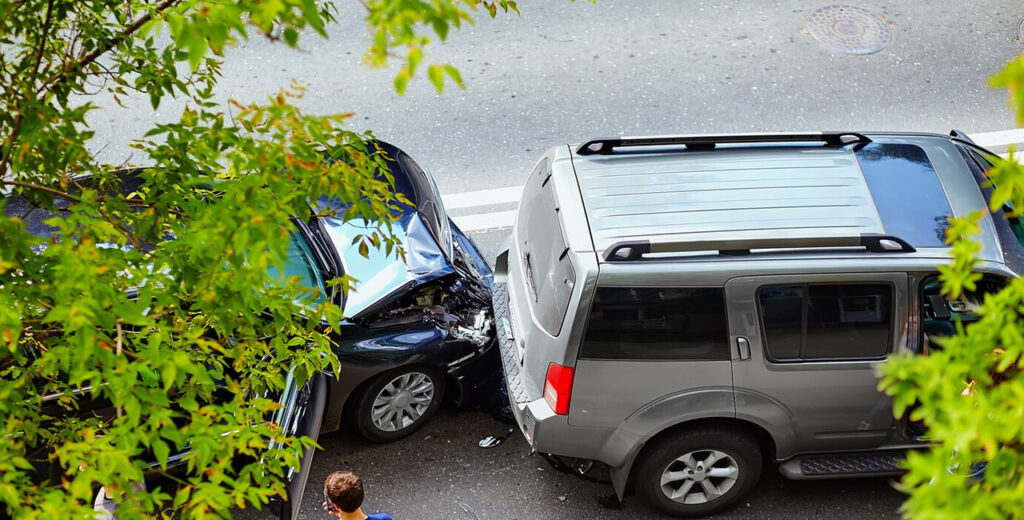Most of the time, if you’ve been in a collision, the other party stays put so that you can exchange insurance information and wait for police or emergency services if there is a dispute or injury.
But on occasion, the other driver flees the scene, leaving you likely frazzled and scrambling. If you carry uninsured driver’s coverage, the costs will be covered by your insurer. However, there things you should and shouldn’t do if you’ve been involved in a hit-and-run accident.
Whatever you do, do not follow or chase the fleeing driver. If you also leave the scene, you may miss out on gathering eye-witness accounts of the accident. The police may also question who is really at fault.
Also, chasing down the other driver puts you at risk of having a violent confrontation.
Sometimes the fleeing driver may have a reason to flee the scene, such as an outstanding arrest warrant or perhaps they were breaking other laws when the accident occurred, like transporting drugs or driving while drunk.Here's what to do:
- First, get as much information as you can about the vehicle that hit you, such as: - Model and make - Color - License Plate Number - The direction the other vehicle was headed when the driver fled
- Call the police and file a report. The official accident report will help police look for the missing driver, and will also be useful when you file your accident claim.
- Next, try to find witnesses and ask for their names and contact information. Ask them if they can supply additional information about the accident. If they give you or the police a statement, be sure to get their names and contact details.
- Write down the time and location of the accident.
- Take pictures of the accident scene.
- Take pictures of your car and all the damage, especially if another vehicle's paint is visible on it.
- This will help you prove that you are not attempting to defraud your insurance company.
- Call your insurance company and report the claim.
Insurance coverage
- Uninsured motorist bodily injury coverage pays for medical expenses.
- Uninsured motorist property damage covers car repairs.
How to Stay Safe on the Road This Winter
Thousands of people are injured or killed every winter because of overconfidence or unpreparedness while driving in dangerous conditions.
It is important for everyone to keep safety in mind while driving in wintry conditions, which can bring with them slippery roads, poor visibility and unpredictable drivers. Driving in snow, sleet and rain can be perilous, but understanding how to drive in these conditions can help save lives and reduce the chances of an accident.
Here’s how you can tackle winter driving with ease.At the start of the season:
- Make sure the vehicle has enough antifreeze and windshield washer fluid.
- Check the tread on the tires to be sure it is thick enough.
- Put a blanket, first aid kit, dry food, clothes and a gallon of water in the car.
- Carry emergency or repair equipment, including flashlights, flares, fire extinguisher, jumper cables, shovel, snow brush and ice scraper.
- Also carry several extra flashlight
Driving tips
Warm up your car — If your windows have frost or are fogging, you should start the car and let it warm up a few minutes to defog and warm up the cabin. Defogging may only take a minute, but if you need to defrost your windows it could be longer.
Proceed slowly — Always drive slowly when the roads may be icy or wet. Speeding is the main cause of accidents during the winter. Remember that having a four-wheel-drive vehicle does not make it safer to drive faster on ice.
Do not accelerate suddenly or change lanes unnecessarily.
Don’t tailgate — Stay at least three to five car lengths behind the driver ahead. Tailgating can quickly lead to an accident. This is especially true in stop-and-go traffic that is moving slowly on slick roads.
On icy roads or during snowfall , increase your following distance behind the vehicle in front of you to seven to nine seconds, compared to the standard three.
Plan ahead — Be sure to allow plenty of time to arrive at the destination and avoid speeding. If you are taking a longer trip, you should carry emergency or repair equipment, including flashlights, flares, fire extinguisher, jumper cables, shovel, snow brush and ice scraper.
You can also carry abrasive materials like sand, kitty litter and even extra floor mats that can be used for traction in snow or on ice if your vehicle gets stuck.
Don’t use cruise control — This is another important tip to remember. When cruise control is activated and the car hits a slick spot on the road, it will cause the wheels to spin and the vehicle to speed up. This can cause the vehicle to go off the road or crash into another one. It is best to simply turn off cruise control in the winter.
Watch out for black ice — Learn how to identify black ice, which is thin and virtually invisible on asphalt and often resembles a puddle of water. There are signs that may indicate the presence of black ice, including shady spots, under bridges or on overpasses, ice build-up on the vehicle’s mirrors and antenna, and frost on trees and road signs.
If you do hit black ice or regular ice, follow these tips:
- If you start to slide, don't hit your brakes and don't panic.
- If you have front-wheel drive or rear-wheel drive with ABS and traction control, look for an open space and plan to travel in that direction. Accelerate just a little and steer gently in the direction of the open space.
- If you have a rear-wheel drive without ABS or traction control, head toward an open space, but instead of applying pressure to the accelerator, ease off and don't break it as you steer to the open space.
The final piece
Besides understanding how to drive safely in winter conditions, accidents can still happen. That’s why it’s important that you carry auto insurance with liability limits that can pay for damage to any expensive automobile you may have crashed into or cover medical expenses of third parties if you are found at fault.
Give us a call.





